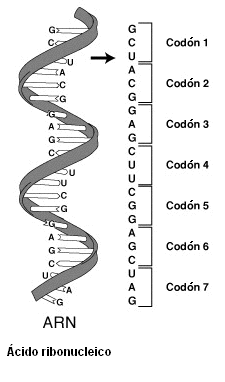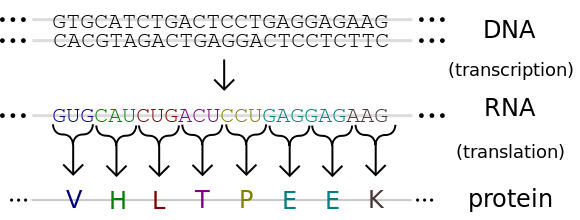The genetic code
The genetic code is the set of rules that allows the translation of a sequence of nucleotides of the mRNA to a sequence of amino acids constituting a protein, in all living beings, which shows that has a single or universal origin, the least the context of our planet.
The code defines the relationship between sequences of three nucleotides, called codons, and amino acids. Thus, each codon corresponds to a specific amino acid.
The sequence of genetic material is made up of four different nitrogenous bases, which have a function equivalent to letters in the genetic code : adenine (A), thymine (T), guanine (G) and cytosine (C) in DNA and adenine ( A), uracil (U), guanine (G), and cytosine (C) in RNA.
The translation of the genetic message into proteins can be done thanks to this "dictionary" called the genetic code . Although there are only 20 different amino acids to code for, only 4 different nitrogenous bases are available to do so. Therefore, it will take more than one nitrogen base to code for each amino acid. If they were two nitrogenous bases, they would encode 42 = 16 different pairs of bases that would encode 16 different amino acids. And if they were three different bases (a triplet), they would code, 43 = 64 different triplets, which could be used to code even more than the 20 amino acids that exist.
Because of this, the number of possible codons is 64:
- 61 codons encode amino acids (one of them being the start codon, AUG, and encoding the amino acid methionine ).
- 3 codons that do not code for any amino acids, but are stop signals (UAA, UAG, and UGA).
Each triplet (group of three) nucleotides of mRNA is called a codon. The codon sequence determines the amino acid sequence in a specific protein, which will have a specific structure and function. The DNA triplets that have been transcribed to these codons are called coding.


